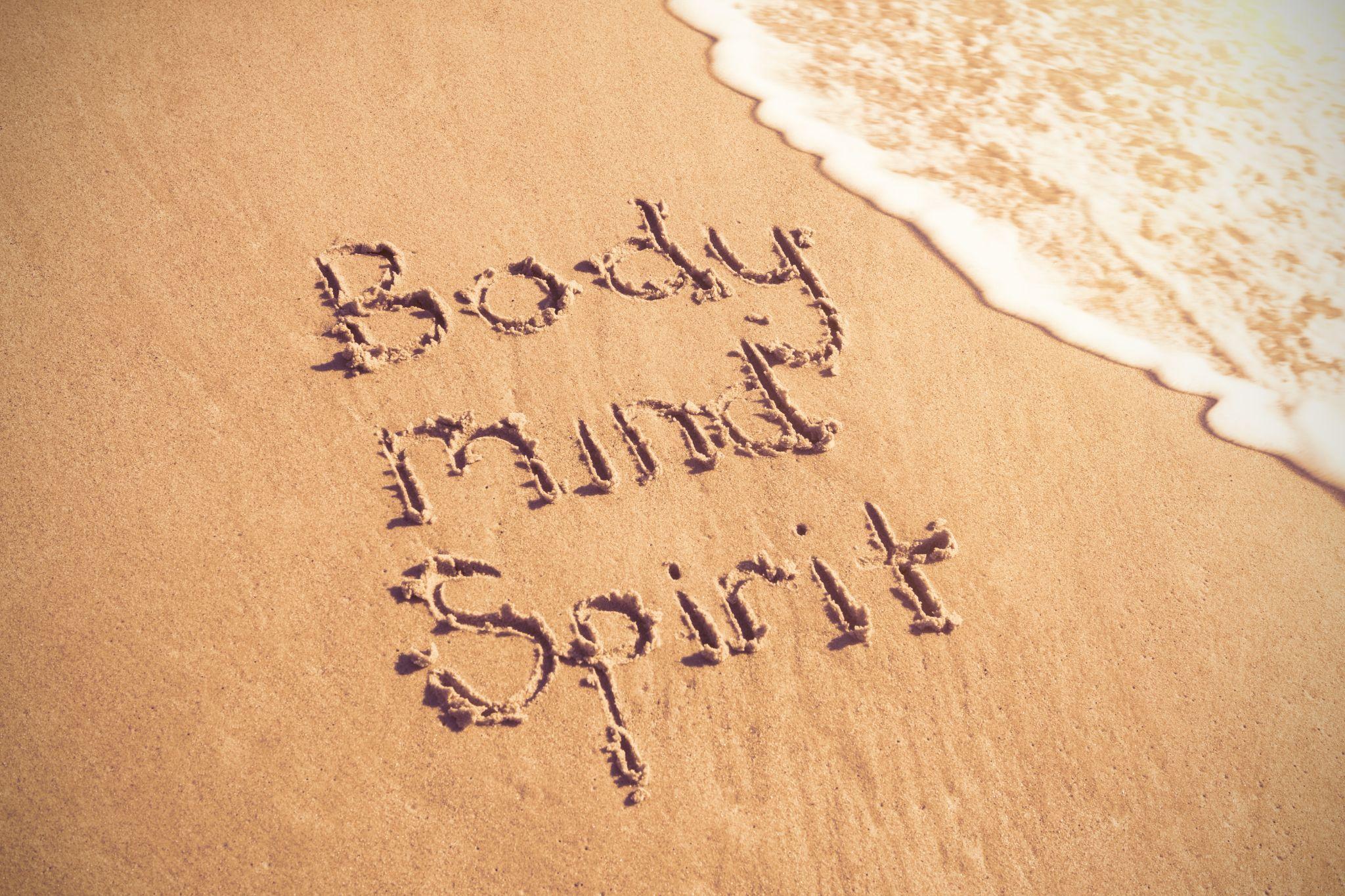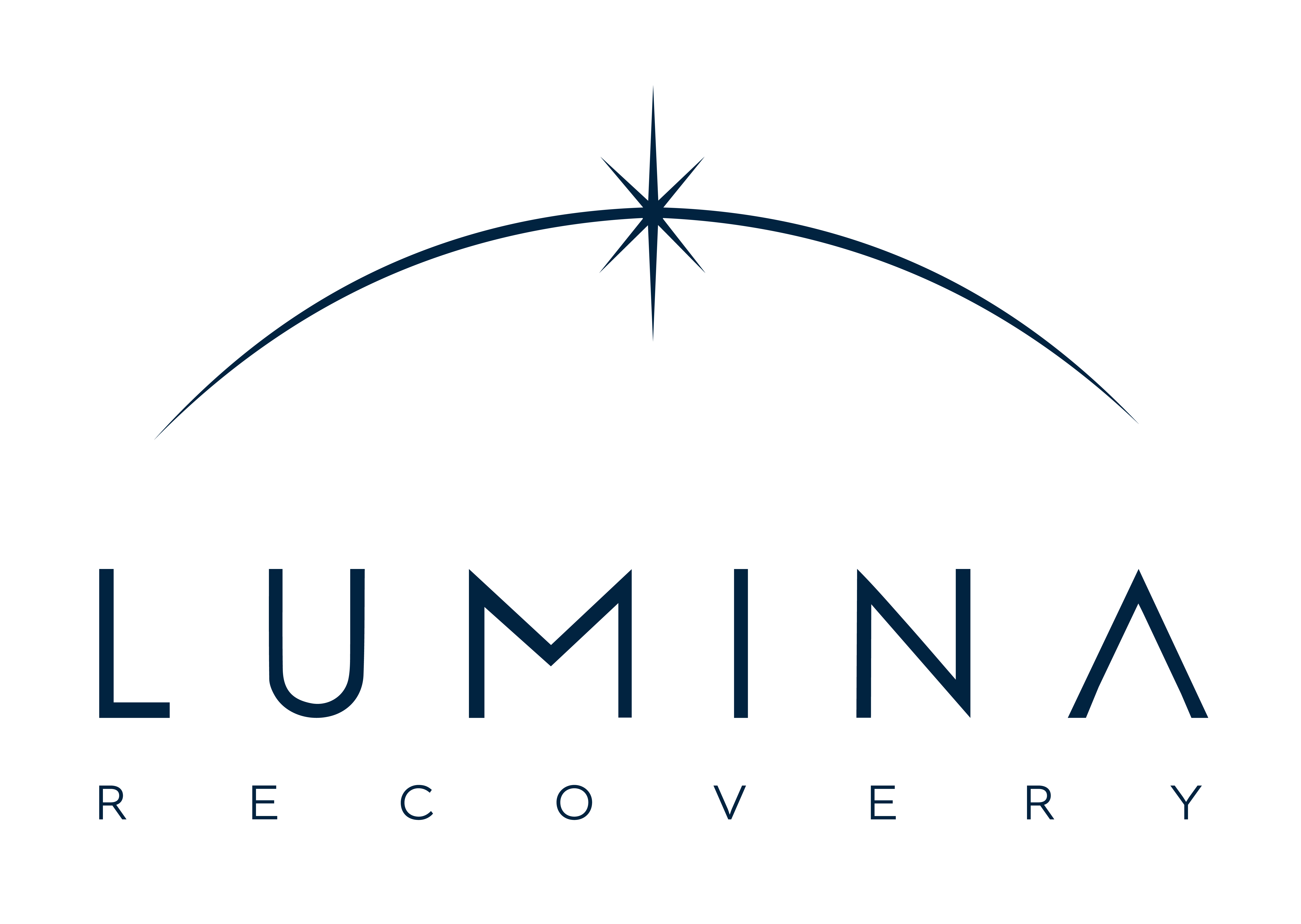
Our Addiction Resources
Navigating the world of addiction and recovery can be overwhelming. We’re here to provide clear, compassionate education and guidance. From practical advice for maintaining sobriety to informational guidance on the long-term effects of substance abuse, our content is a beacon of hope and understanding.
Our Team is Ready are ready to take your call
Call us Today!
or we can call you. Fill out form below
Our Blog

10 Things to Look for in a Job When Recovering From Addiction
Recovering from addiction to drugs or alcohol affects every part of a person’s life, including their career. As someone embarking on this new chapter or a loved one supporting them, it’s important to recognize that the right job can significantly impact the recovery process positively.
At Lumina Recovery, we are sharing ideas of supportive employment opportunities that might nurture recovery and contribute to a fulfilling, balanced lifestyle. Having a career for people in recovery from addiction is possible, and it’s vital to think about what works best for you.
What to Look for in Jobs When Recovering From Addiction
Let’s delve into each aspect that can contribute to a more supportive work environment for individuals on their recovery journey.
1. Stress Levels
Emphasize work-life balance. Choosing a job that prioritizes work-life balance is crucial. Recovery requires ample time for self-care, therapy, and support meetings. Employers who understand the importance of mental health days, offer paid time off, and discourage overtime can help maintain a low-stress environment conducive to recovery.
2. Supportive Work Culture
Find mental health resources and peer support. A supportive workplace extends beyond the basic acceptance of recovery. It includes active resources such as employee assistance programs (EAPs) that provide counseling and support services. Additionally, workplaces that encourage peer support groups or mentorship programs for those in recovery can foster a sense of community and understanding.
3. Flexible Scheduling
Look at adaptability and remote work options. Flexibility can be a key factor in sustaining recovery. Jobs that aren’t full-time and allow for adaptable schedules, remote work, or the ability to adjust hours to accommodate recovery program sessions can make a significant difference. This flexibility ensures that recovery activities are not neglected for work responsibilities.
4. Purpose and Passion
Focus on alignment with personal values and interests. Engagement in work that is meaningful and aligns with one’s values can enhance job satisfaction and overall well-being. Jobs that allow for creative expression, helping others, or contributing to a cause can reinforce recovery by providing a sense of purpose and fulfillment.
5. Stable Environment
Have predictability and routine. A stable work environment offers a predictable schedule and consistent expectations, which can help reduce anxiety and stress. Knowing what to expect each day at work helps build a routine that is supportive of recovery, allowing for planning and stability in one’s personal and professional life.
6. Health Benefits
Get comprehensive coverage including mental health services. Health benefits that include comprehensive coverage for mental health services, substance abuse treatment, and wellness programs are invaluable. Such benefits ensure access to necessary medical and therapeutic support, which is a cornerstone of effective recovery.
7. Opportunities for Growth
Find professional development and educational support. Jobs that offer opportunities for growth and learning can boost self-esteem and motivation. Employers that support professional development, offer tuition assistance, or provide training opportunities encourage personal and professional growth. This can be particularly empowering for those in recovery, as it emphasizes progress and potential.
8. Safe Environment
Look for drug-free workplace policies. Workplaces with clear drug-free policies and practices that promote safety can offer a reassuring environment for those in recovery. Knowing that the workplace is committed to maintaining a substance-free environment can help mitigate triggers and support a substance-free lifestyle.
9. Non-Discriminatory Policies
Identify fair treatment and equal opportunities. Employers who actively implement and uphold non-discriminatory policies create an inclusive environment that respects the journey of all employees, including those recovering from addiction. Fair treatment and equal opportunities for advancement send a powerful message of acceptance and support.
10. Privacy and Confidentiality
Must have respect for personal boundaries. A job that respects employees’ privacy and maintains confidentiality, especially regarding health and recovery matters, is vital. Trust in the workplace to handle sensitive information appropriately can alleviate concerns about stigma and discrimination.

Types of Jobs for Those Recovering From Addiction
Finding the right job during the recovery process from addiction is not just about earning a living, but creating a life that supports and enhances your journey to wellness. Below, we explore the best jobs for recovering addicts that not only accommodate the unique needs of those in recovery but also contribute to their ongoing healing and personal growth.
Creative Arts Positions
Engaging in the creative arts offers a unique avenue for expression and emotional healing. Jobs in this sector, such as graphic design, writing, music, or painting, not only foster personal growth but also can be highly flexible, often allowing for remote work or unconventional hours. This flexibility is crucial for accommodating therapy sessions and support group meetings, making creative roles ideal for those in recovery.
Nonprofit Sector Work
Positions within the nonprofit sector can provide a deep sense of purpose and community connection. Whether it’s careers in addiction recovery or for causes like homelessness, education, and environmental conservation, such organizations often value empathy and resilience as much as professional skills. Nonprofits may also offer supportive environments that recognize the importance of mental health and wellness.
Animal Care Roles
Jobs involving animal care, such as veterinary assistance, pet grooming, animal shelter support, or pet sitting, can offer therapeutic benefits. The compassion required for these roles can be a source of comfort and healing, providing a nurturing environment that supports recovery. Additionally, the routine and responsibility associated with animal care can help individuals in recovery establish structure in their lives.
Fitness and Wellness Industry
Working in the fitness and wellness sector, such as being a personal trainer, yoga instructor, or wellness coach, encourages not only physical health but also mental well-being. These roles often allow for flexible scheduling and the opportunity to positively impact others’ lives. Moreover, focusing on wellness and physical health can be a powerful component of a holistic recovery approach.
Culinary Arts
The culinary industry offers various roles that cater to creative expression, from cooking and baking to restaurant management. These positions often provide a fast-paced but rewarding environment, where teamwork and support are needed.
The act of creating and serving food can offer a sense of accomplishment and joy, important for someone in recovery. Furthermore, many in the culinary world have experienced their own struggles with addiction, leading to a more understanding and supportive workplace culture.
Mental Health Specialist
For those who have navigated the challenges of addiction and recovery, a career in mental health as a therapist, addiction counselor, or social worker offers a powerful way to give back. These roles require empathy, understanding, and a deep commitment to helping others through their darkest times. This career path not only promotes personal growth and healing but also changes the lives of many, making a profound and lasting impact on the community.
Educational Roles
Teaching, tutoring, or working in educational support can be enriching for those in recovery. These roles often come with a structured schedule and provide the opportunity to give back by shaping the minds and futures of students. Education jobs can range from formal teaching positions to more informal roles like mentoring or workshop facilitation, all of which can be incredibly fulfilling for someone looking to make a positive difference.
Understand Your Resources With Lumina Recovery
Choosing the right job during recovery from addiction is crucial for maintaining a healthy, balanced lifestyle. The path to recovery is unique for everyone, and finding a job that aligns with your personal needs and goals is essential.
Lumina Recovery recognizes it can be hard to balance treatment and a career, which is why we pride ourselves on our outpatient and telehealth services to give you the flexibility to live your life, substance-free.
Reach out today to speak to our professionals.

10 Common Substance Use Triggers and How to Handle Them
If you or a loved one are navigating the challenging journey of recovery from addiction, identifying and managing triggers for substance use disorders is a crucial step. Recognizing internal and external triggers and knowing how to manage them effectively can empower individuals to maintain their sobriety and progress on their path to long-term recovery.
Understanding common triggers in recovery and healthy coping mechanisms for them can provide a great foundation for a successful recovery from substance abuse.
10 Common Substance Use Triggers
Substance use triggers are specific situations, feelings, people, or places that can increase the temptation to use drugs or alcohol. These addiction relapse triggers can be external, such as a particular location or social setting, or internal triggers, like a specific emotional state. Identifying these triggers in addiction recovery is a fundamental way to create a proactive plan to cope with them. Some common triggers can include:
- Stress: Stress is a universal trigger and can stem from various sources such as job pressures, financial difficulties, relationship issues, or health concerns. It’s important to identify stressors and work on stress reduction techniques tailored to individual needs.
- Emotional Distress: Negative emotions such as sadness, loneliness, anger, anxiety, and boredom are significant triggers. These feelings may stem from unresolved personal issues, mental health disorders, or situational challenges. It’s crucial to learn healthy ways to process these emotions for recovery.
- Environmental Cues: Places, smells, sounds, or sights associated with past substance use can act as powerful cues, triggering cravings. Being aware of these cues and either avoiding them or preparing to face them without using substances is key.
- Social Influences: Social situations involving people who are using substances can be challenging. This includes parties, concerts, or even spending time with certain friends or family members. Developing strategies to either avoid these situations or manage them without succumbing to substance use is essential.
- Anniversaries of Traumatic Events: Anniversaries of significant losses or traumatic events can evoke strong emotions that may trigger substance use as a form of escape or coping mechanism. Recognizing these dates and planning supportive activities or therapy sessions in advance can help manage these triggers.
- Physical Pain or Discomfort: For some, physical pain or discomfort can trigger substance use, especially if substances were previously used as a form of self-medication. Seeking appropriate medical treatment and exploring non-substance-based pain management techniques are important strategies.
- Peer Pressure: Even outside of direct social situations, the perceived expectation to use substances when around certain people can be a trigger. Strengthening assertiveness skills and developing a supportive peer network can help resist this pressure.
- Boredom: Lack of engagement in meaningful activities can lead to boredom, which might trigger substance use as a way to pass the time or feel stimulated. Finding hobbies, interests, or volunteer opportunities can fill this void with positive experiences.
- Success or Celebration: Positive events such as achievements or celebrations can also serve as triggers, with substance use historically associated with reward or celebration. Creating new traditions that celebrate success without substances is a healthy approach.
- Withdrawal Symptoms: For those in the early stages of recovery, physical or psychological withdrawal symptoms can trigger cravings for substances. Accessing medical support and withdrawal management strategies is critical during this time.

How to Handle Substance Use Triggers
Effectively handling substance use triggers requires a well-rounded approach. The goal is to develop a robust set of strategies that can be deployed as needed, to manage the diverse and often unpredictable nature of these triggers.
Develop stress management techniques. Stress is a common trigger for many. Identifying healthy ways to cope with stress, such as through exercise, meditation, yoga, or engaging in hobbies, can significantly reduce the urge to use substances. Deep breathing, progressive muscle relaxation, and mindfulness can effectively manage acute stress.
Seek emotional support. Building a network of friends and family members who respect your journey can provide a sense of belonging and community. Additionally, participating in support groups offers the opportunity to connect with others who are facing similar challenges. Professional support from therapists or counselors who specialize in addiction can also offer personalized strategies for managing triggers and underlying emotional issues.
Avoid high-risk situations. This involves recognizing and steering clear of environments or social settings that pose a temptation to use. This might mean changing routines, avoiding certain places, or distancing oneself from people who do not support your recovery.
When avoidance is not possible, having a plan in place is crucial. This can include having a sober friend accompany you, setting a time limit for your attendance, or having a list of reasons you can review as a reminder of why you’re choosing to remain sober.
Practice healthy lifestyle choices. Regular exercise, balanced nutrition, and adequate sleep can enhance physical and mental well-being, increasing resilience against triggers. A healthy lifestyle can improve mood, reduce stress, and decrease the likelihood of seeking substances as a form of self-medication.
Use delay tactics. By delaying the decision to use substances for a short period, such as 15-30 minutes, and engaging in an alternative activity, the intensity of the craving may pass or become more manageable.
Reflect and plan. This involves taking time to regularly assess which situations trigger cravings and analyzing how you respond. This reflection can help in recognizing patterns and preparing more effectively for future encounters with triggers.
Educate yourself and others. Talking and learning about the nature of addiction and the recovery process can empower both you and your support network. Knowledge can demystify the recovery process and enable friends and family to provide more effective support.
Seek professional help. Finding help when triggers lead to relapse or the temptation becomes overwhelming is a critical step. Addiction specialists can offer comprehensive treatment plans, including medication-assisted treatment, behavioral therapies, and support groups, tailored to individual needs.
Get Professional Support With Lumina Recovery
By applying these strategies, individuals can empower themselves to navigate through triggers more effectively and maintain their commitment to recovery. Remember, each day sober is a victory, and every challenge overcome is a testament to your strength and resilience.
Lumina Recovery is here to support you on this journey at our addiction treatment centers, providing individual and group therapy to support you every step of the way.

What Is a Holistic Approach to Addiction Recovery?
It can be overwhelming to find the right substance abuse treatment that heals and treats the whole person. This is where a holistic treatment approach to addiction recovery comes into play.
Instead of focusing solely on the addiction, holistic treatment programs encompass the physical, emotional, mental, and spiritual well-being of the individual. Holistic addiction recovery is a perspective that aims to work on every part of the spirit, healing towards wholeness.
The Holistic Approach
A holistic approach to addiction treatment transcends traditional treatment modalities that often focus just on the physical symptoms of addiction, such as managing withdrawal symptoms.
It is rooted in the understanding that addiction is a complex issue that impacts an individual’s life across various dimensions—physical, emotional, mental, and spiritual.
This comprehensive method seeks to restore balance and wellness in all these areas, promoting healing that is both deep and enduring. Let’s delve deeper into what this approach entails:
Integrated Treatment Strategy
The main idea behind holistic addiction treatment programs is the integration of various treatment strategies that collectively address the complex nature of addiction.
It operates on the premise that effective recovery must go beyond just addressing the chemical dependency to encompass emotional imbalances, psychological conditions, and spiritual emptiness that may have contributed to the addiction.
Physical Health and Detoxification
While detoxification is an essential step in removing addictive substances from the body, a holistic approach also emphasizes the need for a strong foundation of physical health.
Nutritional therapy, exercise, and complementary therapies like acupuncture or massage therapy are integrated to support the body’s healing and strengthen its resilience against withdrawal symptoms and relapse.
Emotional and Mental Health Support
Recognizing that addiction often coexists with mental health disorders such as depression, anxiety, or PTSD, holistic recovery includes therapies aimed at treating these conditions in conjunction with addiction.
Counseling, cognitive behavioral therapy (CBT), and other evidence-based psychotherapies are tailored to help individuals understand the root causes of their addiction, develop healthy coping mechanisms, and rebuild their self-esteem and emotional well-being.
Spiritual Wellness
Holistic therapy for addiction also acknowledges the importance of spiritual wellness in recovery. This doesn’t necessarily mean religion but rather any practice that connects an individual to a sense of purpose and meaning beyond themselves.
Meditation, mindfulness practices, yoga, and exploration of personal beliefs and values are encouraged to foster a sense of inner peace and connection to the world.
Social and Environmental Considerations
Addiction recovery is also seen in the context of the individual’s social and environmental influences. A holistic program will often include family therapy, support groups, and community-building activities to help rebuild broken relationships and develop a supportive network.
Education on creating a healthy, substance-free environment is also a key component, empowering individuals to make lifestyle changes that support their long-term recovery.
Customization and Personal Growth
A distinctive feature of a holistic approach is its emphasis on customization and personal growth. Recognizing that each person’s journey to recovery is unique, treatment plans are highly personalized.
They are designed to address substance use disorders and help individuals discover their strengths, develop new interests and skills, and build a fulfilling life that doesn’t revolve around substance use.
How to Have a Holistic Approach to Addiction Recovery
1. Integrative Therapy Options
Incorporate a blend of therapeutic techniques such as traditional counseling, cognitive behavioral therapy (CBT), motivational interviewing, and alternative therapies like art therapy, music therapy, equine therapy, and biofeedback. The aim is to provide multiple avenues for healing and self-expression.
2. Physical Wellness
Implement a balanced diet rich in nutrients to support brain health and overall physical recovery. Engage in regular physical activity, which can range from gentle exercises like walking and yoga to more vigorous workouts, to improve physical health, reduce stress, and boost mood.
Ensure proper medical supervision during the detoxification phase and consider natural supplements and remedies to support the body’s healing process, under professional guidance.
3. Emotional and Mental Support
Engage in individual and group therapy sessions to address emotional pain, trauma, and underlying mental health issues. Techniques such as mindfulness-based stress reduction (MBSR) and dialectical behavior therapy (DBT) can also be effective.
4. Spiritual Connection
Incorporate practices that enhance spiritual well-being, such as meditation, yoga, or prayer, according to the individual’s beliefs and preferences. These practices help in fostering a sense of connection, inner peace, and purpose.

5. Social Support and Community
Encourage participation in support groups like 12-step programs or other recovery communities. Establishing strong connections with others who are on a similar journey can provide invaluable support, understanding, and accountability.
Involve family members and close friends in the recovery process through therapy and educational programs. This helps in repairing relationships and building a supportive home environment.
6. Lifestyle and Environmental Changes
Promote the adoption of healthy lifestyle choices, such as sufficient sleep, stress management techniques, and hobbies that encourage creativity and personal growth.
Assess and make necessary changes to the individual’s living environment to remove triggers and ensure a supportive, substance-free space.
7. Continuous Monitoring and Adjustment
Regularly review and adjust the treatment plan as necessary to align with the individual’s progress, challenges, and evolving needs. Recovery is a dynamic process that may require changes in strategy over time.
8. Long-Term Support and Relapse Prevention
Plan for long-term support and relapse prevention strategies, including continuous therapy sessions, booster sessions in case of stress or triggers, and involvement in recovery communities.
Start Your Holistic Healing With Lumina Recovery
A holistic approach to addiction recovery offers a comprehensive path that not only seeks to overcome the addiction but also to heal and nurture the individual as a whole. By addressing the physical, emotional, mental, and spiritual aspects of recovery, individuals are given the tools and support necessary to build a foundation for a healthier, more fulfilling life.
Lumina Recovery supports a holistic healing journey through dual diagnosis programs and a wide range of therapy services at our recovery centers. Embracing a holistic approach can provide a balanced and sustainable path forward for those struggling with addiction and their loved ones.
Reach out to our Lumina Recovery team of professionals to see how we can support you or your loved one on their holistic healing.

What Wellness Means for Addiction Recovery
When someone is navigating the path of addiction recovery, the term “wellness” takes on a profound significance. Wellness in recovery isn’t just about physical health, but a comprehensive blend of mental, emotional, and social fitness.
For people in recovery from a substance use disorder or their loved ones observing this journey, understanding what wellness means is a vital part of long-term healing. It’s about creating a life that feels whole, balanced, and fulfilling.
A Holistic Approach to Wellness in Addiction Recovery
Wellness during addiction recovery is about much more than simply avoiding drugs and alcohol. It’s about nurturing and harmonizing various facets of your life to achieve good health. Let’s break down these important parts of overall health:
Physical Wellness
Physical wellness is critical because the body often bears the brunt of addiction’s consequences. Recovery is an opportunity to heal physically by:
- Adopting nutritious eating habits. Substance abuse can deplete the body of essential nutrients. Eating a balanced diet restores these nutrients, boosts energy levels, and supports physical healing.
- Incorporating regular exercise. Exercise releases endorphins, which can naturally make you feel good. It also helps in rebuilding physical strength, improving sleep, and reducing cravings for substances.
- Prioritizing rest and sleep. Quality sleep is fundamental in recovery. It helps in healing and rejuvenating the body and mind, making it easier to cope with stress and avoid relapse.
Emotional Wellness
Recovery is often an emotional rollercoaster. Emotional wellness involves:
- Developing emotional intelligence. Understanding and managing your emotional health is a crucial part of recovery. This means recognizing triggers, acknowledging feelings without judgment, and expressing emotions constructively.
- Building resilience. Developing the coping skill to bounce back from setbacks is key. This involves cultivating a positive outlook, practicing self-compassion, and learning from challenges.
- Seeking emotional support. Whether through therapy, support groups, or connections with trusted individuals, sharing your experiences and feelings can provide relief and strengthen your emotional wellness.
Mental Wellness
Mental wellness in addiction recovery is about caring for your mind and ensuring it supports your journey:
- Addressing co-occurring disorders. Many individuals with addiction issues also experience mental health disorders such as anxiety or depression. Treating these concurrently is essential for a holistic recovery.
- Enhancing cognitive functions. Substance abuse can impair cognitive functions. Engaging in activities that stimulate the mind, like reading, puzzles, or learning new skills, can help rebuild and strengthen these cognitive abilities.
- Promoting positive mental health. Cultivating a positive mindset, practicing gratitude, and setting realistic goals can significantly impact your mental health, making the recovery process more manageable and meaningful.
Social Wellness
Addiction can strain or sever relationships. Social wellness focuses on restoring and nurturing these connections by:
- Rebuilding trust. Honesty, transparency, and consistent actions over time are foundational in rebuilding trust with loved ones.
- Cultivating supportive networks. Surrounding yourself with people who support your recovery can provide encouragement and accountability. This might include joining recovery groups or participating in community activities.
- Enhancing communication skills. Effective communication is vital in repairing and strengthening relationships. Learning to express your needs and listen to others can improve mutual understanding and support.
Spiritual Wellness
Spiritual wellness is about connecting with something greater than oneself and discovering a sense of purpose by:
- Exploring personal beliefs. This can involve reflecting on personal values, exploring spirituality or religion, and integrating these beliefs into your recovery journey.
- Connecting with nature and the universe. Many find solace and a sense of belonging by spending time in nature or contemplating their place in the universe.
- Practicing mindfulness and meditation. These practices can help center your thoughts, reduce stress, and foster a deeper connection with the present moment, enhancing spiritual wellness.

How to Achieve Wellness in Addiction Recovery
Achieving wellness in addiction recovery is a dynamic and personal journey that involves embracing various practices and making lifestyle changes that resonate with each facet of your well-being.
Physical wellness is foundational in the recovery process, necessitating attention to the body’s needs for healing and strength. Prioritizing physical health begins with simple, consistent habits such as adopting a nutritious diet that replenishes the body with essential vitamins and minerals.
Activities can range from daily walks and yoga to more structured exercise routines. Equally important is ensuring adequate rest and quality sleep, as they are pivotal for physical and cognitive restoration.
Emotional wellness involves cultivating resilience and learning to navigate the complex emotional landscape of recovery. Developing emotional intelligence entails recognizing, accepting, and expressing one’s emotions in healthy ways.
Techniques such as mindfulness and meditation can enhance emotional awareness, while creative outlets like journaling or art provide expressive paths for emotional release. Building resilience through positive thinking and self-compassion helps individuals bounce back from setbacks. Additionally, establishing a support network, including counseling or therapy when necessary, offers a safe space to process emotions and seek guidance.
Mental wellness focuses on nurturing the mind, addressing any co-occurring mental health issues, and promoting positive mental health. Engaging in cognitive exercises and learning new skills can help sharpen mental faculties and offer a sense of accomplishment.
Managing stress through relaxation techniques such as deep breathing, mindfulness, or progressive muscle relaxation can significantly improve mental health. For those with co-occurring disorders, seeking professional help to address these conditions is crucial for a holistic recovery approach.
Social wellness is about rebuilding trust and strengthening relationships that may have been affected by addiction. It involves being open and honest with loved ones, actively listening, and expressing needs and boundaries clearly.
Joining support groups or recovery communities provides a sense of belonging and mutual support, offering insights and encouragement from those on similar paths. Volunteering or engaging in social activities can broaden social circles and foster connections based on shared interests rather than substance use.
Spiritual wellness allows individuals to find meaning, purpose, and connection beyond themselves. This might involve exploring personal beliefs, engaging in spiritual practices, or simply spending time in nature to feel a sense of connection with the world.
Mindfulness practices and meditation can also support spiritual wellness by fostering a deep sense of presence and interconnectedness.
Find Wellness With Lumina Recovery
Understanding and integrating the concept of wellness into addiction recovery can transform the journey into one of profound personal growth and fulfillment. By addressing the emotional, social, spiritual, physical, and mental aspects of wellness, individuals in recovery can build a solid foundation for a sustainable and rewarding life.
Treatment programs at Lumina Recovery include dual diagnosis support and therapy services to aid you or your loved one on the path to wellness. Remember, this path is personal and unique—it’s about finding what works for you and adapting as you grow.
Reach out to our team at Lumina Recovery if you have any questions.

The Relationship Between Nature and Addiction Recovery
One often overlooked ally in the battle against addiction is the natural world. The relationship between nature and addiction recovery is profound and multifaceted, offering solace, inspiration, and a path toward healing that complements traditional therapeutic approaches.
There are significant connections between spending time in nature and improved mental health, and integrating nature into the recovery process can have major health benefits for the mind and body.
Connecting Nature and Addiction Recovery
Nature holds a special place in the realm of healing and recovery. The connection between nature and addiction recovery is grounded in science and psychology.
Studies show that exposure to nature can reduce stress, lower cortisol levels, and enhance mood.1 For individuals dealing with substance use disorders, these natural benefits can provide a much-needed respite from the mental and emotional turmoil that accompanies addiction treatment.
The therapeutic effects of nature can be attributed to several factors. Spending time outdoors often encourages physical activity, whether it’s a gentle walk in the park or a more vigorous hike. This physical activity may boost endorphins, the body’s natural mood elevators, which can combat feelings of depression and anxiety often linked with addiction recovery.
Nature’s inherent beauty and tranquility can often create a sense of peace and mindfulness, encouraging individuals to live in the moment. This mindfulness can reduce dwelling on past mistakes or worrying about future challenges, both common hurdles in recovery.
Also, nature can foster a sense of connection and belonging. For many battling substance abuse from drugs and alcohol, feelings of isolation and disconnection are profound. The natural world, with its intricate ecosystems and universal rhythms, can remind individuals that they are part of something larger than themselves, reducing feelings of isolation and enhancing a sense of community and support.
The Healing Power of Nature
The embrace of nature offers a myriad of benefits, especially for those journeying through the process of recovery from addiction. Here’s an exploration of nature’s healing effects:
- Stress Reduction: Nature has a profound ability to lower stress levels. The serene landscapes and quietude of the natural world encourage a state of relaxation, reducing cortisol levels and promoting a sense of calm.1
- Enhanced Mood: Spending time outdoors, especially in green spaces, has been linked to improved mood and emotional well-being. The fresh air, natural light, and beauty of the environment can help alleviate symptoms of depression and anxiety.2
- Physical Health Benefits: Nature encourages physical activity, which in turn boosts overall health. Activities such as walking, hiking, or gardening in natural settings can improve cardiovascular health, increase strength, and support a healthy weight.
- Improved Concentration and Creativity: Being in nature can rejuvenate the mind, enhancing focus, creativity, and cognitive functions. The natural environment, free from the distractions of technology and urban chaos, allows the mind to rest and recover, fostering new ideas and perspectives.
- Social Connection: Outdoor activities often provide opportunities for social interaction, whether it’s walking with a friend, participating in group sports, or engaging in community gardening. These connections are vital for emotional support and a sense of belonging.
- Spiritual Growth: For many, nature is a source of spiritual nourishment. The awe-inspiring beauty of the natural world can evoke feelings of wonder, gratitude, and a deeper connection to something greater than oneself.
Tips for Incorporating Nature into Addiction Recovery
There are practical and meaningful ways to weave the calming essence of nature into the fabric of recovery. These tips are designed to help individuals and their loved ones harness the therapeutic power of nature.
Take Daily Nature Breaks
Emphasize consistency. Make nature breaks a consistent part of your daily routine. Identify a time of day when you can regularly step outside, ensuring this becomes a habit rather than an afterthought. Early morning or late afternoon can offer especially serene experiences.
Explore varied environments. Don’t limit yourself to a single setting. Explore different types of natural environments like parks, beaches, forests, and gardens. Each offers unique benefits and sensory experiences.

Try Nature-Based Exercise
Set achievable goals. Start with short, manageable outdoor activities and gradually increase their duration and intensity. This approach ensures that the activity remains enjoyable and sustainable.
Join a group. Participating in outdoor exercise groups can offer social support and motivation. Look for local hiking clubs, cycling groups, or outdoor yoga classes.
Practice Mindfulness and Meditation in Nature
Use guided practices. If you’re new to mindfulness or meditation, consider using guided audio practices designed for outdoor settings. These can help direct your attention to the natural world and enhance the experience.
Focus on sensory experiences. Pay close attention to the sights, sounds, smells, and textures around you. This sensory focus can deepen your connection to nature and the present moment.
Create a Nature Journal
Reflect on your experiences. After each nature outing, take a moment to jot down what you saw, felt, and thought. This reflection can amplify the benefits of your time spent in nature.
Include artistic elements. Don’t limit your journal to text. Include drawings, pressed flowers, or photographs to make the journal a more creative and personal record of your journey.
Volunteer for Environmental Causes
Find your passion. Choose a cause that speaks to you, whether it’s wildlife conservation, tree planting, or working in community gardens. This passion will fuel your commitment and enrich your recovery journey.
Build connections. Volunteering offers the chance to meet like-minded individuals, and build a supportive network that shares your interests and recovery goals.
Bring Nature Indoors
Choose plants wisely. Research plants that thrive indoors and require a level of care that fits your lifestyle. Some plants, like snake plants and peace lilies, are particularly effective at improving indoor air quality.
Create a relaxing space. Dedicate a space in your home where you can relax with your indoor plants, natural materials, and perhaps a water feature. Use this space for meditation, reading, or simply unwinding.
Find Resources for Addiction Recovery With Lumina Recovery
By forging a closer bond with the natural world, individuals in recovery can find not only a peaceful sanctuary from the struggles of addiction but also a path to healing that is enriching, sustainable, and deeply transformative.
Lumina Recovery has many inpatient residential locations like in Agoura Hills, where you are surrounded by nature to accompany your healing process. Let the natural world be your ally on this journey, and discover the serene power of nature in nurturing the body, calming the mind, and healing the heart.
To learn more about our treatment programs and locations, talk to our team today.
Sources:

The Best 8 Apps for Maintaining Sobriety
Recovering from substance abuse is a personal and ongoing commitment to maintain sobriety and rebuild a life of health, happiness, and fulfillment. In our digital age, technology has become a valuable ally in this journey, offering tools and resources designed to support, motivate, and guide individuals on the path to recovery.
Certain apps can be effective for maintaining sobriety after recovery, although what works for everyone on their sobriety journey is unique. These digital aids offer various features from tracking your sober days to connecting with a supportive community, making it easier for you to stay committed to your sobriety goals.
1. Twenty-Four Hours a Day
The Twenty-Four Hours a Day app is an invaluable companion for individuals in recovery, offering daily meditative readings derived from the classic recovery literature. Its interface is designed for ease of use, providing users with thoughtful reflections that can be read in the morning to set a positive tone for the day or during challenging moments when encouragement is needed.
This app serves not only as a source of daily inspiration but also as a tool for personal growth and reflection. By embedding these meditations into daily routines, individuals reinforce their commitment to sobriety, grounding their recovery in a foundation of spiritual and emotional well-being.
2. I Am Sober
Beyond tracking sobriety days, I Am Sober encompasses a suite of features designed to actively support the recovery journey. This app facilitates personal goal setting, offering reminders for daily pledges and reflecting on achievements. It also includes a comprehensive dashboard that provides insights into milestones achieved and the money you’ve saved from avoiding substances.
The community aspect of I Am Sober is particularly impactful. Users can connect with a wide network of individuals who share similar goals and struggles, allowing for an exchange of stories, advice, and encouragement. This collective aspect fosters a sense of accountability and belonging.
3. Sober App
The Sober App is more than just a sober day tracker. It’s a holistic toolkit for habit formation, motivation, and community support. This app integrates proven strategies to help you maintain a clean and sober lifestyle while improving your mental health.
Track your sober days and see the tangible benefits of your commitment through the sobriety calculator, which highlights the time and money you’ve saved. Daily motivational messages provide quick, uplifting reminders, while the unique search engine for emotions helps you effectively manage your feelings and prevent relapse. The app’s relapse prevention process guides you through cravings with a question-based approach.
4. Nomo – Sobriety Clocks
Nomo – Sobriety Clocks is designed to help individuals in recovery keep track of their sobriety milestones. It offers multiple clocks to monitor different aspects of recovery, making it a versatile tool for anyone looking to manage and celebrate their progress.
Nomo stands out for its ability to cater to various recovery goals, allowing users to set up separate clocks for different challenges they are overcoming. This feature acknowledges that recovery can be multifaceted and that each milestone, no matter how small, is worth celebrating. The app also facilitates connection with accountability partners, providing an added layer of support.

5. 12 Step Toolkit
The 12 Step Toolkit app is a comprehensive tool designed for individuals in Alcoholics Anonymous (AA) or other 12-step programs. It offers a range of features to support users in their recovery journey, including a Big Book reader, a sobriety calculator, and the ability to track your progress through the 12 steps.
This app acts as a portable, digital companion for those following the 12-step program. With access to the Big Book on the go, users can easily reference texts and find inspiration whenever needed. The sobriety calculator keeps track of how long you’ve been sober, providing a visual reminder of your progress and the effort you’ve invested in your recovery.
6. Loosid: Sober Recovery Network
Loosid is a dynamic addiction recovery app that brings a fresh perspective to sobriety and recovery. It not only serves as a platform for connecting with a sober community but also offers dating and event features specifically tailored for individuals trying to make sober friends. Loosid aims to make recovery engaging and inclusive, providing a space where users can share their journey, find support, and enjoy a variety of sober activities together.
The unique blend of social networking, dating, and event planning within a sober context makes Loosid an invaluable tool for those looking to maintain their sobriety while leading a full and active life. By facilitating connections with like-minded individuals, the app helps users build a strong support network of peers who understand the challenges of recovery.
7. SMART Recovery
SMART Recovery is an app grounded in cognitive-behavioral therapy principles, offering a range of tools designed to help individuals manage addictive behaviors. The SMART Recovery cost-benefit analysis tool encourages users to weigh the pros and cons of their substance use versus maintaining sobriety.
This analytical approach empowers users to make informed decisions about their recovery journey. By visually mapping out the advantages and disadvantages of using versus not using, individuals can see the tangible benefits of sobriety. This process fosters a deeper understanding of personal motivations for recovery and reinforces the commitment to a sober lifestyle.
8. Sober Sidekick: Quit Drinking
Sober Sidekick is an app designed to revolutionize the journey to sobriety. It positions itself as your digital companion in quitting drinking, harnessing the power of community, accountability, and personalized support. This app offers a platform for users to connect with thousands of others who are facing similar challenges, sharing experiences, and offering mutual support.
One of the core features of Sober Sidekick is its emphasis on community support. The app’s meeting finder capabilities offer 24/7 AA and NA support groups via Zoom and information for in-person meetings for extra support. It enables users to participate in a vast sober network, engage in meaningful conversations, and receive encouragement from peers who truly understand the path to sobriety. The app integrates accountability mechanisms, helping users stay on track with their sobriety goals through daily check-ins and progress tracking.
Find Sobriety Support With Lumina Recovery
Maintaining sobriety after recovery from a substance use disorder is a continuous process that requires dedication, support, and the right tools. By integrating these apps into your recovery process, you can enhance your ability to stay sober and move forward with confidence and resilience.
No matter where you are in your recovery journey, Lumina Recovery’s treatment programs are here to support you every step of the way from detox services to outpatient support. We understand what you or your loved one is going through and we’re here to help.
Reach out to our team of specialists to discover more about how we can support your journey to recovery.

Forgiving a Loved One in Addiction Recovery
Watching a loved one struggling with addiction can be heart-wrenching. It challenges our trust, strains our emotions, and tests our limits of understanding and compassion.
However, as they embark on the recovery process, an important challenging step for those around them is forgiveness. Forgiving a loved one in addiction recovery is not just about them, but a crucial part of your healing journey too.
The Importance of Forgiveness in Addiction Recovery
Forgiveness in recovery is an important aspect that not only heals the emotional and relational tears but also the psychological and physical health benefits for both the person in recovery and their loved ones. Forgiveness plays a pivotal role in the healing journey, influencing outcomes and enhancing the quality of life.
Healing Emotional Wounds
Forgiveness can feel like lifting a heavy weight off your shoulders. The emotional turmoil that accompanies a loved one’s addiction can create deep wounds, filled with disappointment, fear, shame, and guilt.
Forgiving them can initiate the healing of these wounds, allowing for the mending of your emotional state. It’s a process that transforms your inner landscape from one of pain and resentment to one of peace and acceptance.
Rebuilding Trust and Relationships
Addiction can severely damage the trust and connections between the person suffering from addiction and those around them. Forgiveness is a critical step in rebuilding these relationships with friends or family members.
It’s about moving past the hurt and actively engaging in restoring long-term trust. Through forgiveness, you demonstrate a belief in the possibility of change and a commitment to a shared future, thereby reinforcing the bond weakened by substance abuse.
Providing Motivation and Support
For someone in recovery, knowing that they are forgiven can be a powerful source of motivation. The journey of recovery is fraught with challenges, including shame and guilt over past actions.
Forgiveness from loved ones can lighten this burden, providing emotional support and a sense of acceptance that fuels their commitment to change. It’s a reminder that they are not alone, that their efforts to rebuild their life are recognized and appreciated.
Enhancing Mental Health and Reducing Stress
The act of forgiveness may be beneficial not just for the individual in recovery but also for the one who forgives. Holding onto anger and feelings of resentment can contribute to a host of psychological issues, including increased stress, anxiety, and depression.
Forgiveness can mitigate these effects, leading to better mental health outcomes. Studies have shown that practicing forgiveness is associated with lower levels of stress, anxiety, and depression and higher levels of happiness and satisfaction with life.
Promoting Physical Health
The benefits of forgiveness can extend to physical health as well. The stress and negative emotions associated with unresolved anger and resentment can have tangible physical effects, including increased blood pressure and a weakened immune system.
By forgiving, individuals can potentially reduce these health risks, promoting not just emotional and relational healing but physical wellness too.
Encouraging Personal Growth and Empathy
Forgiving a loved one in addiction recovery is an act of empathy and understanding. It requires recognizing the complexity of addiction to drugs or alcohol as a disease and seeing beyond the individual’s actions to their struggles and humanity.
This perspective fosters personal growth, enabling both parties to develop deeper compassion and a more nuanced understanding of human frailty and resilience.
10 Tips for Forgiving a Loved One in Addiction Recovery
Forgiveness is a journey that requires patience, understanding, and self-reflection. Discover strategies to navigate this path with greater understanding and compassion.
1. Acknowledge and Process Your Feelings
Recognizing and processing your feelings is a crucial first step. It’s important to give yourself permission to feel hurt, angry, or betrayed. Acknowledging these emotions is valid, and understanding them is key to moving forward.
Consider journaling or speaking with a trusted friend or therapist to articulate and work through these emotions. Processing these feelings allows you to approach forgiveness from a place of clarity and intention.
2. Educate Yourself About Addiction
Educating yourself about addiction as a complex disease can change your perspective on your loved one’s behavior. Learning about the biological, psychological, and social factors that contribute to addiction can foster empathy and reduce personal blame.
Resources such as reputable websites, support groups, and educational seminars can provide valuable insights into the nature of addiction and the challenges of recovery.

3. Practice Open and Honest Communication
Effective communication is foundational to rebuilding trust and understanding. Create a safe space where you and your loved one can express thoughts and feelings openly.
Use “I” statements to convey how their actions have impacted you without placing blame. Listening to their experiences and struggles with an open heart can also promote mutual understanding and healing.
4. Set and Respect Healthy Boundaries
Setting boundaries is crucial for your well-being and your loved one’s recovery. Boundaries help define what you are comfortable with and protect you from potential harm.
You should communicate these boundaries clearly and kindly, and be firm in upholding them. Healthy boundaries can also encourage your loved one to take responsibility for their actions and recovery.
5. Seek Support From Others
Forgiveness can be an emotionally taxing process, and you don’t have to go through it alone. Support groups for families of those in addiction recovery can offer guidance, understanding, and a sense of community. Professional counseling can also provide personalized support, helping you navigate your feelings and the forgiveness process.
6. Be Patient With the Process
Forgiveness is not a one-time event but a process that unfolds over time. There may be setbacks and difficult days. Exercising patience with yourself and your loved one is crucial. Recognize that healing takes time, and progress may not always be linear. Celebrate small victories and acknowledge the effort it takes to move toward forgiveness.
7. Focus on the Present and Future
While it’s important to acknowledge the past, dwelling on it can hinder forgiveness. Instead, focus on the present efforts your loved one is making toward recovery and the future you hope to build together. Emphasizing positive actions and changes can help shift your perspective and facilitate forgiveness.
8. Prioritize Self-Care
Taking care of yourself is essential. Engage in activities that bring you joy and relaxation. Whether it’s spending time in nature, pursuing a hobby, or practicing mindfulness, self-care can strengthen your emotional resilience and provide the mental clarity needed to forgive.
9. Reflect on the Benefits of Forgiveness
Reminding yourself of the benefits of forgiveness for both you and your loved one can serve as motivation. Consider how forgiveness can lead to emotional release, improved relationships, and a healthier, happier life. Reflecting on these outcomes can help you stay committed to the process.
10. Embrace Empathy and Compassion
Finally, approaching the situation with empathy and compassion can facilitate forgiveness. Try to see things from your loved one’s perspective, recognizing the struggle and pain that accompanies addiction. Compassion for yourself is also important. Recognize that forgiveness is a sign of strength, not weakness.
Practice Forgiveness With Lumina Recovery
Forgiving a loved one in addiction recovery is not just an act of kindness towards them, but a gift you give yourself. By understanding the importance of forgiveness and employing strategies to work through your feelings, you can foster healing, support recovery, and rebuild the strong, loving relationships that addiction has tested.
Lumina Recovery offers personalized treatment plans including residential inpatient and outpatient treatment programs to help you or a loved one with sobriety. Remember, forgiveness is a journey, one step at a time, towards healing and renewal.
Contact us today to learn more about our services.

Tips for Self-Forgiveness in Addiction Recovery
Recovery from addiction is a path of profound personal transformation, where self-forgiveness plays a crucial role. For many, the weight of past actions while under the influence can be a heavy burden, leading to feelings of guilt, shame, and unworthiness.
These emotions, if left unaddressed, can hinder one’s mental health and progress toward a healthier, substance-free life. Recognizing the importance of self-forgiveness in recovery, Lumina Recovery has tips that may help individuals navigate through forgiving themselves and moving forward with hope and resilience.
The Importance of Self-Forgiveness in Addiction Recovery
The journey of recovery from addiction is as much about healing the mind and spirit as it is about detoxifying the body. Within this transformative path, the role of self-forgiveness emerges as a critical element, pivotal in bridging the gap between past regrets and a hopeful future.
Self-forgiveness in addiction recovery is vital because it addresses the deep-seated feelings of guilt and shame that many individuals struggle with. These emotions, if left unchecked, can serve as significant barriers to progress, leading to a cycle of negative emotions and, potentially, relapse.
By learning to forgive oneself, a person begins the forgiveness process of emotional healing, accepting responsibility for past mistakes while also recognizing that these errors do not define their entire being.
Moreover, self-forgiveness facilitates a shift towards positive self-identity and self-worth, essential components of a stable recovery. It encourages viewing oneself with compassion and understanding, rather than with judgment and contempt. This shift is crucial for building resilience against the challenges of recovery, as it fosters a supportive internal dialogue that empowers individuals to face obstacles with strength and grace.
Furthermore, self-forgiveness opens the door to personal growth and development. It allows individuals to reflect on their past actions with a lens of learning and growth, identifying lessons and insights that can guide their future choices. This perspective aids in making amends, rebuilding relationships, and crafting a life aligned with one’s values, free from substance dependence.
Additionally, practicing self-forgiveness in recovery has a profound impact on the dynamics of interpersonal relationships. It often involves making amends, which can lead to the healing of relationships strained or broken by the actions taken during periods of addiction. These acts of reconciliation are not just crucial for personal recovery but also for re-establishing trust and building a supportive network of loved ones.
Moreover, as self-forgiveness alleviates the burden of guilt and shame, it lessens the emotional turmoil that can trigger relapse, thus playing a direct role in sustaining long-term recovery. It paves the way for a more compassionate, resilient, and fulfilling journey towards sobriety, where individuals are not defined by their past but are empowered to build a brighter future.
8 Tips for Practicing Self-Forgiveness in Addiction Recovery
1. Acknowledge and Accept Your Past Mistakes
The journey to self-forgiveness begins with confronting and accepting your past actions during your active addiction without judgment. This step is about honesty and courage by recognizing that while you cannot change the past, you can learn from it.
Addiction treatment programs encourage starting by writing down regrets and acknowledging the pain caused to others and oneself. Acceptance is a pivotal step towards healing, allowing you to understand that your mistakes do not define your worth as a person.
2. Understand That Mistakes Are Part of Being Human
Everyone has flaws and makes mistakes—reminding oneself that errors are part of the human experience and opportunities for growth is essential.
Try to reframe your mistakes as lessons rather than failures. Reflect on what each experience you had struggling with addiction to drugs or alcohol taught you and how it can inform your decisions moving forward. This perspective fosters a growth mindset, essential for recovery and personal development.
3. Engage in Open Communication
Sharing your feelings of guilt and remorse can be incredibly healing. Reach out to a trusted friend, family member, or support group member to discuss your journey and the emotions you’re grappling with.
Speaking your truth out loud can lighten the emotional load and provide new insights or perspectives on forgiveness. Remember, vulnerability is a strength, not a weakness, and seeking support is a critical step in the recovery process.

4. Practice Self-Compassion
Self-compassion involves treating oneself with the same kindness, concern, and support one would offer a good friend. Begin by recognizing your self-critical thoughts and actively replacing them with more compassionate responses.
Engage in self-care practices that nourish your body, mind, and spirit. That can be through meditation, exercise, creative expression, or simply allowing yourself moments of rest and relaxation. Remember, healing is not linear, and practicing self-compassion is key to navigating the ups and downs of recovery.
5. Make Amends Where Possible
Part of the healing process involves taking responsibility for your actions and, where possible, making amends. This doesn’t necessarily mean seeking forgiveness from others but rather doing what you can to rectify past wrongs.
This can involve direct apologies, offering restitution, or committing to positive actions that benefit those you’ve hurt. Making amends is a powerful step in rebuilding trust, both in yourself and in your relationships with others.
6. Focus on the Present and Future
While acknowledging the past is important, dwelling on it can prevent you from moving forward. Practice mindfulness to bring your attention to the present moment, recognizing that you have the power to shape your future.
Set positive, achievable goals for yourself and take small, consistent steps towards them. Celebrating your progress, no matter how small, can boost your confidence and reinforce your commitment to a sober and fulfilling life.
7. Seek Professional Help
Navigating the complex emotions associated with addiction and recovery can be overwhelming. If you find it challenging to cope with feelings of guilt and shame, consider seeking the guidance of a professional therapist or counselor. They can offer support and strategies tailored to your individual needs, helping you work through emotional barriers and develop a healthier relationship with yourself.
8. Celebrate Your Progress
Every step taken toward recovery and self-forgiveness is an achievement worth celebrating. Recognize and honor your progress, whether it’s attending meetings, reaching sobriety milestones, or simply engaging in acts of self-care. Celebrating your achievements reinforces positive behavior and reminds you of your strength and resilience.
Achieve Self-Forgiveness With Lumina Recovery
Self-forgiveness in addiction recovery is a vital component of emotional healing and personal growth. It allows individuals to move beyond the guilt and shame of their past actions, fostering a positive self-image and a hopeful outlook for the future.
Lumina Recovery offers dual diagnosis care and a variety of therapy modalities in our treatment plans to foster self-forgiveness. This allows you to pave the way for a life filled with compassion, understanding, and resilience.
Contact us today to learn more about our available services.

How to Celebrate Your Birthday Sober
Birthdays are milestones that often call for celebration. However, for those navigating the journey of sobriety, these occasions can present unique challenges.
The societal norm of toasting to another year with alcohol can make the idea of a sober birthday seem daunting. Yet, celebrating your special day sober not only marks another year of life but also your commitment to a healthier, substance-free lifestyle.
Whether you’re in recovery or a loved one looking to support someone, there are creative, fulfilling, and fun ways to celebrate a birthday without drugs and alcohol, ensuring the day is memorable, joyous, and aligned with sobriety goals.
Plan Ahead
Reflect on what makes you happy. Begin by considering activities or interests that bring you joy, which do not involve alcohol. This reflection will help personalize your celebration, ensuring it feels rewarding. Whether it’s outdoor adventures, crafting, cooking, or reading, your birthday should reflect your passions.
Create a sober celebration plan. Design your day with intention, focusing on activities that align with your sobriety. If you love nature, plan a hike or a picnic in a scenic location. If you’re more of an indoor person, think about hosting a game night or a movie marathon with your favorite films. The key is to spend time planning these activities ahead of time to avoid any triggers or last-minute changes that might compromise your sobriety.
Inform your guests. Communication is key. If you’re inviting friends or family, let them know your intention to keep the celebration alcohol-free. Most loved ones will be supportive, and making your plans clear from the start helps set the right expectations.
Have a backup plan. Despite careful planning, unexpected triggers can arise. Have a list of sober contacts like friends, family, or support group members you can call if you need encouragement. Knowing you have a support system can provide peace of mind.
Embrace New Traditions
Host a sober party. A great way to celebrate is with a themed party that focuses on activities rather than alcohol. You could organize a mocktail-making competition where guests create non-alcoholic drinks, a board game night, or a potluck dinner where everyone brings a dish to share. Themes can be as creative or as simple as you like, from a costume party to a wellness retreat with meditation and yoga sessions.
Try something new. Birthdays are a fantastic opportunity to step out of your comfort zone and try new activities. Sign up for a workshop or class that interests you, like pottery, painting, or dance. Not only does this provide a fun and engaging way to celebrate, but it also allows you to learn a new skill or hobby.
Create a sober tradition. Establish a sober birthday tradition that you can look forward to each year. This could be anything from a solo adventure, like a retreat or a trip to a place you’ve always wanted to visit, to a group activity, like volunteering for a cause you’re passionate about. The tradition should be something that celebrates life and your journey as part of the recovery process, serving as a yearly reminder of how far you’ve come.
Make memories. Instead of focusing on alcohol, center your birthday around making long-term memories. Hire a photographer for a photoshoot with friends, embark on a road trip to a new destination, or create a time capsule with letters to your future self. These activities provide tangible reminders of your birthday and the progress you’ve made.
Focus on Self-Care
Pamper yourself. Your birthday is the perfect excuse to indulge in self-care activities that make you feel pampered and appreciated. Book a spa day for some relaxation, enjoy a professional massage, or have a beauty treatment you’ve been longing for. If you prefer staying in, create a tranquil environment at home with a warm bath, scented candles, and your favorite music.
Nurture your body. Treat your body with care and respect on your birthday. Prepare a nutritious and delicious meal for yourself, or visit a restaurant you’ve always wanted to try that offers healthy, gourmet options. Engage in activities that promote well-being, such as yoga, meditation, or a leisurely walk in nature.
Invest in your interests. Consider starting a new book, diving into a hobby you’ve neglected, or purchasing something that contributes to your hobby or interests. Whether it’s art supplies, a musical instrument, or a set of books, investing in your interests can be a fulfilling way to celebrate your day.

Connect With Loved Ones
Prioritize quality time over quantity. Focus on spending your birthday with people who genuinely support your sobriety and well-being. Plan small gatherings or one-on-one meetings with friends or family members who uplift you. Activities can range from coffee dates, meals at cozy restaurants, to a day out in nature.
Host a sober dinner party. Invite your closest friends or family members over for a homemade dinner. Choose a menu that excites you and perhaps cook together as part of the celebration. This can create a warm, intimate atmosphere that fosters meaningful conversations and strengthens bonds.
Volunteer together. Organize a group activity that focuses on giving back, such as volunteering at a local shelter, participating in a community clean-up, or helping out at a food bank. This can be a profoundly rewarding way to celebrate your birthday, offering perspective, gratitude, and a sense of community.
Celebrate Your Achievements
Celebrate sobriety milestones. Acknowledge the significance of celebrating your birthday sober, especially if it coincides with a sobriety milestone. Create a ritual to mark these achievements like a year of sobriety, such as writing a letter to yourself reflecting or planting a tree or garden as a living symbol of your growth.
Share your story. If you feel comfortable, share your journey with others as a way to celebrate your achievements. This can be through a blog post, social media, a speaking engagement at a support group, or simply among friends and family. Sharing your story of substance abuse and recovery can be empowering and inspiring.
Set future goals. Use your birthday as a time to reflect on the past year and to set goals for the coming year. These goals can be related to your personal development, career aspirations, or sobriety journey. Writing down your goals and sharing them with a trusted friend or mentor can help keep you accountable and motivated.
Celebrate with gratitude. Take time to express gratitude for your journey, the lessons learned, and the people who have supported you along the way. Consider writing thank-you notes or expressing your appreciation in person. Gratitude can enhance your sense of connection and well-being, making your birthday celebration even more meaningful.
Find Sober Ways to Celebrate With Lumina Recovery
Celebrating your birthday sober is an empowering testament to your strength and commitment to a healthier lifestyle. By planning ahead, embracing new traditions, focusing on self-care, connecting with loved ones, and celebrating your achievements, your sober birthday can be as joyful and fulfilling—if not more so—than any celebrated with alcohol.
At Lumina Recovery’s treatment centers, we have programs for many types of addiction as well as group therapy for those needing that kind of support. Each sober birthday is not just a year added to your life, but life added to your years. Here’s to celebrating you in the most meaningful way!
Contact us today for yourself or a loved one to get more information.
Additional Resources
Once you have completed your rehabilitation program at one of our drug and alcohol treatment centers, you should try to surround yourself with people who can encourage you to stay sober. Many people find that support groups are the best source of encouragement. You can find hundreds of support groups and meetings in your community. Our drug addiction treatment centers stress the importance of personal chemical dependency resources, especially when you are new to sobriety. Below are various addiction and mental health resources for people in recovery who want additional support.
Christian Addiction Recovery Resources
Our substance abuse services aren’t limited to specific programs, but rather we believe in the importance of incorporating faith-based programs to promote spiritual healing, like our Faith in Recovery program.
With that said, below are some faith-based addiction recovery resources that could help you in your spiritual healing from addiction:
- Battlefield of the Mind by Joyce Meyer
- Boundaries by Dr. Henry Cloud & Dr. John Townsend
- Christian Families in Recovery: A Guide for Addiction, Recovery, and Intervention Using God’s Tools of Redemption by Robert and Stephanie Tucker
- Club New Life Christian Ministry for Addiction and Recovery
- Lost & Found: Recovery in Christ by Bruce Stanley
- Overcoming Emotional Obstacles through Faith: Navigating the Mind Field by Anthony Acampora, Director of Banyan’s Faith in Recovery Program
- The Case for Christ by Lee Strobel
Mental Health Resources for Recovery
Lumina Recovery consist of both mental health and substance abuse treatment facilities, meaning we offer mental health resources as well as chemical dependency resources. What’s more, addiction often co-occurs with mental illness, making these resources ever more important.
Below are some resources for mental health recovery that can help you or your loved one:
- This Emotional Life video series
- No Kidding, Me 2!! with Joe Pantoliano
- Dare: The New Way to End Anxiety and Stop Panic Attacks by Barry McDonagh
- Pleasure Unwoven: An Explanation of the Brain Disease of Addiction by Kevin McCauley
- Declutter Your Mind: How to Stop Worrying, Relieve Anxiety, and Eliminate Negative Thinking by S.J. Scott and Barrie Davenport
Call Us Today – (877) 716-7515

